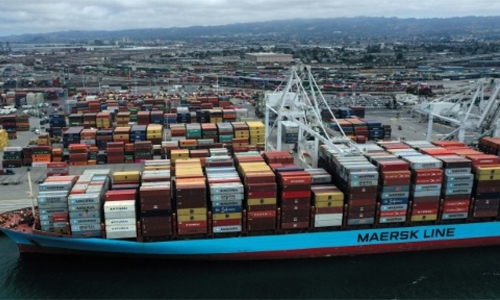China GDP growth slows to 6.2pc in Q2
China’s growth slowed to its weakest pace in almost three decades in the second quarter, with the US-China trade war and weakening global demand weighing on the world’s number-two economy, official data showed yesterday. The slowing economy makes it more difficult for President Xi Jinping to fight back forcefully against Washington -- which is using tariffs as leverage to try to force Beijing into opening up its economy.
The 6.2 per cent figure released by the National Bureau of Statistics was in line with a survey of analysts by AFP and down from a 6.4pc expansion in the first quarter. The GDP figures are within the government’s target range of 6.0-6.5pc for the whole year, down from the 6.6pc growth China put up in 2018. “Economic conditions are still severe both at home and abroad, global economic growth is slowing down and the external instabilities and uncertainties are increasing,” said NBS spokesman Mao Shengyong.
“The economy is under new downward pressure.” Beijing has introduced measures including a massive tax cut to boost the economy, but they have not been enough to offset a domestic slowdown and softening overseas demand -- made worse by a punishing trade war with its biggest trading partner country, the United States. Total exports rose only 0.1pc on-year during the first six months. Analysts widely expect Beijing will step up support in the coming months. Mao told journalists: “There is still much room for policy manoeuvering”.
Monetary easing is expected to help boost the economy, and the central bank on Monday finalised a previously announced cut to the amount of cash that small and medium-sized banks hold in reserve. With this year marking the 70th anniversary of the People’s Republic of China founding, politics necessitates healthy growth, said Raymond Yeung of ANZ bank. “The Chinese government will not allow the quarterly growth to fall below 6.0 (percent),” he said in a note.
Bright spots
The month of June held bright spots for the economy. Industrial output rose 6.3pc, from 5.0pc in May, which was the slowest increase since 2002. Fixed-asset investment also picked up, rising 5.8pc on-year in January-June, from 5.6pc in January-May. China’s 1.3 billion consumers continued to open their wallets, with retail sales growing 9.8pc on-year in June, up from 8.6pc in May.
“A stronger end to the quarter didn’t prevent growth from slowing in (the second quarter) and we see more weakness on the horizon,” said Julian Evans-Pritchard of Capital Economics in a note. Sales of big-ticket items such as cars have not held up, with sales down 12.4pc in the first half of the year, according to the China Association of Automobile Manufacturers. And growth in infrastructure investment has retreated from years of near 20pc expansion -- coming in at a 4.1pc rise in January-June.
Imports and exports also both shrank in June, while the urban unemployment rate ticked up to 5.1pc for the month. Meanwhile, extreme weather and highly contagious African swine fever have sent food prices skyrocketing, especially for meat, with the size of the world’s largest pig herd down 15pc in the first half of the year.
‘Economic realities’
The trade war with the US has hit demand for China’s goods, compounding slowing demand from the rest of the world. “It’s hard to escape the economic realities that the US-China trade war is having on global economies,” said Stephen Innes, managing partner at Vanguard Markets. Altogether the two economic giants have slapped each other with punitive tariffs covering more than $360 billion in twoway trade, damaging manufacturers on both sides of the Pacific.
It helped push China’s manufacturing activity into contraction last month and its exports to the US dropped more than 8pc over the first half of the year. High-level trade talks to resolve the issues resumed this month, but the gulf between the two sides remains wide. China on Friday said it would impose sanctions on US companies involved in a potential arms sale worth $2.2 billion to self-ruled Taiwan.
Related Posts

